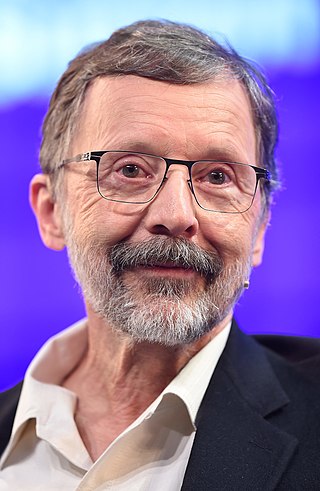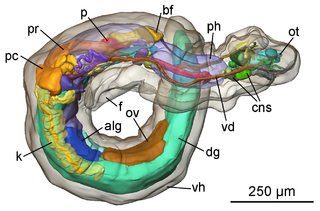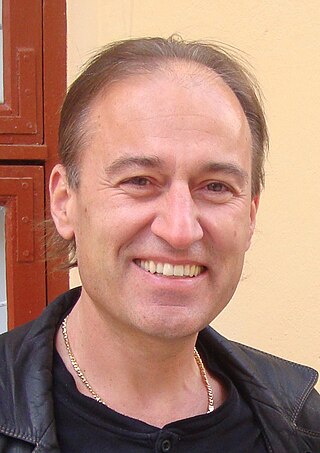
SIGGRAPH is an annual conference centered around computer graphics organized by ACM, starting in 1974. The main conference is held in North America; SIGGRAPH Asia, a second conference held annually, has been held since 2008 in countries throughout Asia.

Edwin Earl Catmull is an American computer scientist and animator who served as the co-founder of Pixar and the President of Walt Disney Animation Studios. He has been honored for his contributions to 3D computer graphics, including the 2019 ACM Turing Award.

ACM SIGGRAPH is the international Association for Computing Machinery's Special Interest Group on Computer Graphics and Interactive Techniques based in New York. It was founded in 1969 by Andy van Dam.

Lance J. Williams was a prominent graphics researcher who made major contributions to texture map prefiltering, shadow rendering algorithms, facial animation, and antialiasing techniques. Williams was one of the first people to recognize the potential of computer graphics to transform film and video making.

The Catmull–Clark algorithm is a technique used in 3D computer graphics to create curved surfaces by using subdivision surface modeling. It was devised by Edwin Catmull and Jim Clark in 1978 as a generalization of bi-cubic uniform B-spline surfaces to arbitrary topology.

Non-photorealistic rendering (NPR) is an area of computer graphics that focuses on enabling a wide variety of expressive styles for digital art, in contrast to traditional computer graphics, which focuses on photorealism. NPR is inspired by other artistic modes such as painting, drawing, technical illustration, and animated cartoons. NPR has appeared in movies and video games in the form of cel-shaded animation as well as in scientific visualization, architectural illustration and experimental animation.

Loren C. Carpenter is a computer graphics researcher and developer.

Alvy Ray Smith III is an American computer scientist who co-founded Lucasfilm's Computer Division and Pixar, participating in the 1980s and 1990s expansion of computer animation into feature film.

Marc Levoy is a computer graphics researcher and Professor Emeritus of Computer Science and Electrical Engineering at Stanford University, a vice president and Fellow at Adobe Inc., and a Distinguished Engineer at Google. He is noted for pioneering work in volume rendering, light fields, and computational photography.

Patrick M. Hanrahan is an American computer graphics researcher, the Canon USA Professor of Computer Science and Electrical Engineering in the Computer Graphics Laboratory at Stanford University. His research focuses on rendering algorithms, graphics processing units, as well as scientific illustration and visualization. He has received numerous awards, including the 2019 Turing Award.

In computer vision and computer graphics, 3D reconstruction is the process of capturing the shape and appearance of real objects. This process can be accomplished either by active or passive methods. If the model is allowed to change its shape in time, this is referred to as non-rigid or spatio-temporal reconstruction.

Computer graphics is a sub-field of computer science which studies methods for digitally synthesizing and manipulating visual content. Although the term often refers to the study of three-dimensional computer graphics, it also encompasses two-dimensional graphics and image processing.

Andrew Paul Witkin was an American computer scientist who made major contributions in computer vision and computer graphics.

Markus Gross is a Professor of Computer science at the Swiss Federal Institute of Technology Zürich (ETH), head of its Computer Graphics Laboratory, and the director of Disney Research, Zurich. His research interests include physically based modeling, computer animation, immersive displays, and video technology. He has published more than 430 scientific papers on algorithms and methods in the field of computer graphics and computer vision, and holds more than 30 patents. He has graduated more than 60 Ph.D. students.
John Turner Whitted is an electrical engineer and computer scientist who introduced recursive ray tracing to the computer graphics community with his 1979 paper "An improved illumination model for shaded display". His algorithm proved to be a practical method of simulating global illumination, inspired many variations, and is in wide use today. Simple recursive implementations of ray tracing are still occasionally referred to as Whitted-style ray tracing.

Demetri Terzopoulos is a Greek-Canadian-American computer scientist and entrepreneur. He is currently a Distinguished Professor and Chancellor's Professor of Computer Science in the Henry Samueli School of Engineering and Applied Science at the University of California, Los Angeles, where he directs the UCLA Computer Graphics & Vision Laboratory.

Dimitris Metaxas is a distinguished professor and the chair of the Computer Science Department at Rutgers University, where he directs the Center for Computational Biomedicine Imaging and Modeling (CBIM).

The Dynamic Graphics Project is an interdisciplinary research laboratory at the University of Toronto devoted to projects involving Computer Graphics, Computer Vision, Human Computer Interaction, and Visualization. The lab began as the computer graphics research group of Computer Science Professor Leslie Mezei in 1967. Mezei invited Bill Buxton, a pioneer of human–computer interaction to join. In 1972, Ronald Baecker, another HCI pioneer joined dgp, establishing dgp as the first Canadian university group focused on computer graphics and human-computer interaction. According to csrankings.org, for the combined subfields of computer graphics, HCI, and visualization the dgp is the number one research institution in the world.

Hanspeter Pfister is a Swiss computer scientist. He is the An Wang Professor of Computer Science at the Harvard John A. Paulson School of Engineering and Applied Sciences and an affiliate faculty member of the Center for Brain Science at Harvard University. His research in visual computing lies at the intersection of scientific visualization, information visualization, computer graphics, and computer vision and spans a wide range of topics, including biomedical image analysis and visualization, image and video analysis, and visual analytics in data science.
Michael F. Cohen is an American computer scientist and researcher in computer graphics. He was a senior research scientist at Microsoft Research for 21 years until he joined Facebook Research in 2015. In 1998, he received the ACM SIGGRAPH CG Achievement Award for his work in developing radiosity methods for realistic image synthesis. He was elected a Fellow of the Association for Computing Machinery in 2007 for his "contributions to computer graphics and computer vision." In 2019, he received the ACM SIGGRAPH Steven A. Coons Award for Outstanding Creative Contributions to Computer Graphics for “his groundbreaking work in numerous areas of research—radiosity, motion simulation & editing, light field rendering, matting & compositing, and computational photography”.


















